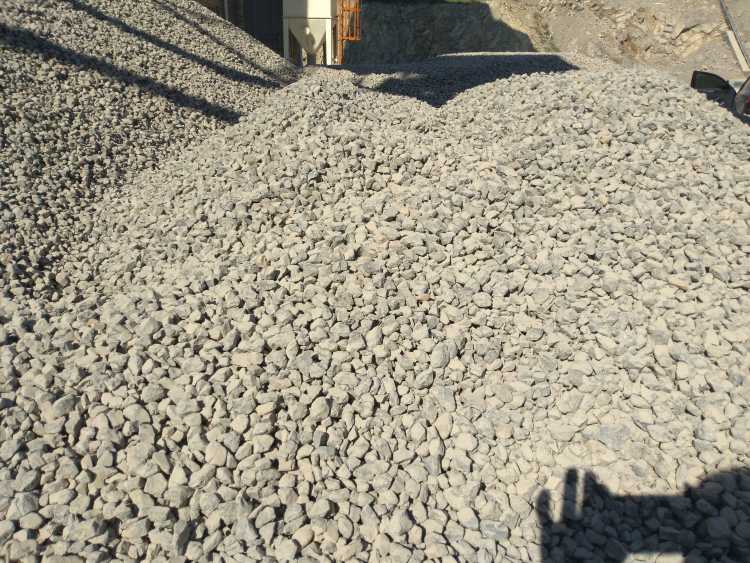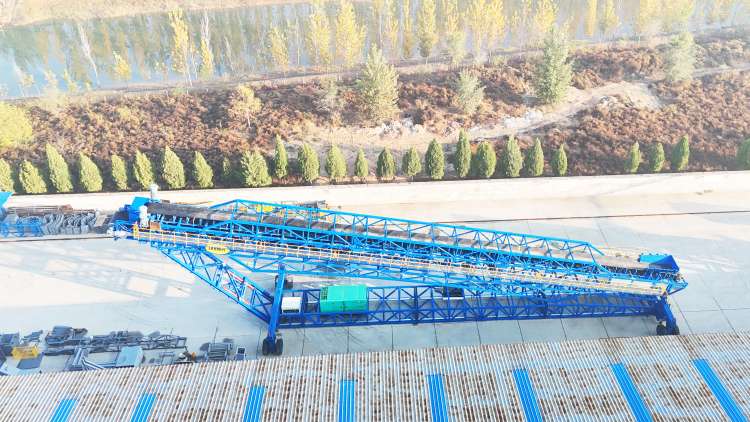Time:2025-02-17 11:55:21 Number of Clicks:
Handymax and Panamax vessels are two common types of ships in global ports, primarily responsible for transporting coal, ore, grain, fertilizer, and other bulk cargoes.
Handymax vessels are typically 170 to 200 meters in length, with a deadweight tonnage (DWT) of 40,000 to 60,000 tons, suitable for most large ports and often equipped with onboard cranes. Panamax vessels are generally around 225 meters in length, with a DWT of approximately 65,000 tons, and are commonly used on routes that require passage through the Panama Canal. Due to the large cargo volumes and high demand for these vessel types, the efficiency requirements for loading and unloading operations are extremely stringent, especially when handling bulk cargoes such as coal, ore, and grain, which have high fluidity. Improving efficiency and reducing material loss are key concerns for shippers.

The most notable feature of Zoomry's telescopic mobile ship loader is its flexible rotation and telescoping capabilities, which adapt to different vessel sizes and loading requirements. The rotation function allows the ship loader to adjust flexibly around a fixed point, enabling a ±90-degree rotation to ensure precise material placement into the cargo hold, eliminating the need for repeated adjustments of the vessel or loader. The telescoping arm design allows the loader's delivery port to extend deep into the cargo hold, enhancing loading uniformity and overall operational efficiency. Additionally, the lifting system automatically adjusts the loader's height to accommodate vessels with different drafts.
| OPERATING DIMENSIONS | ZRSL-46(m) | ZRSL-52(m) | ZRSL-58(m) | |
| Conveyor Length | A | 46 | 52 | 58 |
| Highest Extended Discharge Height | B | 16.9 | 19.1 | 21.1 |
| Lowest Extended Discharge Height | C | 4.6 | 4.9 | 5.9 |
| Highest Retracted Discharge Height | D | 8.9 | 11.8 | 12.8 |
| Lowest Retracted Discharge Height | E | 4 | 4.6 | 4.7 |
| Anchor Pivot to Center of Axle | F | 20.2 | 23.7 | 24.9 |
| Anchor Pivot to Discharge | G | 42.2 | 49 | 54.6 |
| Feed Height | H | 3.5 | 3.6 | 3.8 |
| Operating Width | 9.8 | 9.8 | 10 |
| Operating Dimensions | ZRSL-46(m) | ZRSL-52(m) | ZRSL-58(m) | |
| Undercarriage Length | A | 21 | 24.8 | 26.1 |
| Clearance (Raised) | B | 14.5 | 16.7 | 18.6 |
| Clearance (Lowered) | C | 4.6 | 4.9 | 5.9 |
| Stinger Conveyor Extension Distance | D | 18 | 19 | 24 |
| Max Height of Main Conveyor | E | 7.5 | 9.5 | 10.1 |
| Operating Dimensions | ZRSL-46(m) | ZRSL-52(m) | ZRSL-58(m) | |
| Maximum radial travel distance of extended conveyor at 90°Arc | A | 62.4 | 68.6 | 76.7 |
| Distance from rear of conveyor to edge of jetty | B | 29.8 | 36.6 | 39.4 |
| Distance from rear of conveyor to discharge point | C | 44 | 50 | 56 |
| Minimum radial travel distance of retracted conveyor at 90°Arc | D | 28 | 33 | 34 |
| Stinger conveyor extension distance | E | 18 | 19 | 24 |
| Total radial angle | 90° | 90° | 90° |
Traditional loading methods, such as belt conveyors, involve significant costs due to site requirements and construction timelines. Grab buckets often result in substantial material loss during loading, especially when handling bulk cargoes like coal, fertilizer, and grain, which are prone to dust and spillage. Zoomry's telescopic mobile ship loader combines precise delivery technology with rotation and telescoping functions to accurately place materials into designated areas of the cargo hold, reducing spillage and dust. The intelligent flow control system automatically adjusts the delivery speed based on the flow characteristics of different materials, ensuring stable and even material placement while preventing overflow. Furthermore, the intelligent control system monitors the cargo hold's filling status in real time and adjusts the loading angle automatically, ensuring uniform cargo distribution, significantly reducing material loss, and improving loading efficiency.
Please contact us using the info below if you have any questions about Telescopic mobile Shiploader for Handymax and Panamax Vessels
During the loading of high-dust cargoes such as coal and ore, spilled dust not only pollutes the surrounding environment but also affects workers' health. Zoomry's telescopic mobile ship loader effectively suppresses dust emissions through a series of eco-friendly designs, enhancing operational safety. The enclosed conveyor system prevents dust from escaping during material transfer. Spraying devices and bag filter systems help effectively suppress dust generation, ensuring clean air during transportation. Additionally, the use of flexible hose delivery ports allows materials to fall slowly and steadily into the cargo hold, reducing dust caused by high drop heights, optimizing the loading process, and meeting increasingly stringent environmental regulations.

The Port of Balboa is one of Panama's most important ports, located at the Pacific entrance of the Panama Canal, handling bulk cargoes such as ore, grain, and fertilizer. As one of the major container and bulk cargo ports in Latin America, the Port of Balboa has an annual throughput of approximately 30 million tons.
In recent years, to improve loading efficiency and reduce environmental impact, the Port of Balboa decided to introduce Zoomry's telescopic mobile ship loader. The port primarily handles iron ore, grain (such as rice and corn), and fertilizer, which are prone to dust and material loss during loading, especially in bulk cargo operations. Controlling dust and reducing spillage became critical issues.
With the rotation and telescoping functions of Zoomry's telescopic mobile ship loader, the loader can precisely align with vessels of different sizes, ensuring fast and accurate material delivery into the cargo hold. Compared to traditional grab bucket loading methods, the telescopic ship loader improved loading efficiency by approximately 30%, significantly speeding up the loading process.
In terms of material loss, the Port of Balboa's Zoomry telescopic mobile ship loader is equipped with a precise flow control system that automatically adjusts the delivery speed based on the physical characteristics of different cargoes, such as iron ore, rice, and corn, preventing overflow and loss. The intelligent control system monitors the cargo hold's loading status in real time and adjusts the delivery angle automatically, ensuring uniform material distribution and improving loading accuracy, thereby reducing material loss. Since the system's implementation, the Port of Balboa has reduced material loss by approximately 150,000 tons annually, significantly lowering material waste and port economic losses.
In terms of environmental protection, the Port of Balboa has strict requirements for port environmental protection, especially during the loading of ore and grain, which are prone to dust generation. To address this, the port adopted Zoomry's telescopic mobile ship loader's enclosed conveyor system, spraying system, and dust removal devices, greatly reducing dust pollution. The enclosed belt conveyor system effectively prevents dust from escaping, while the spraying and dust removal system suppresses dust during loading. The flexible hose delivery port design allows materials to fall slowly into the cargo hold, reducing dust diffusion caused by height differences, ensuring port environmental and worker health safety, and meeting Panama's high environmental standards.
Copyright © 2002-2024 Zoomry Group Company Limited